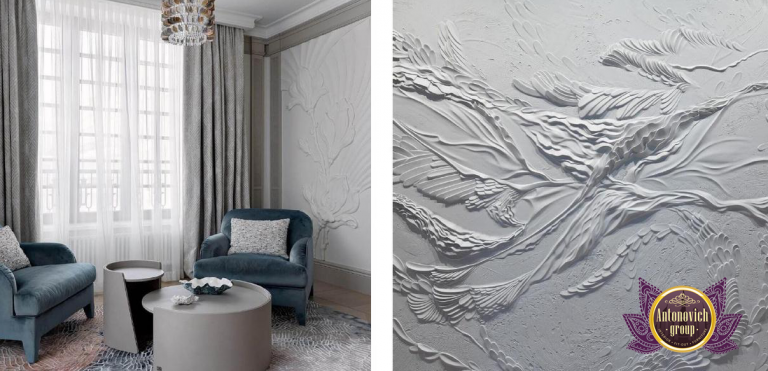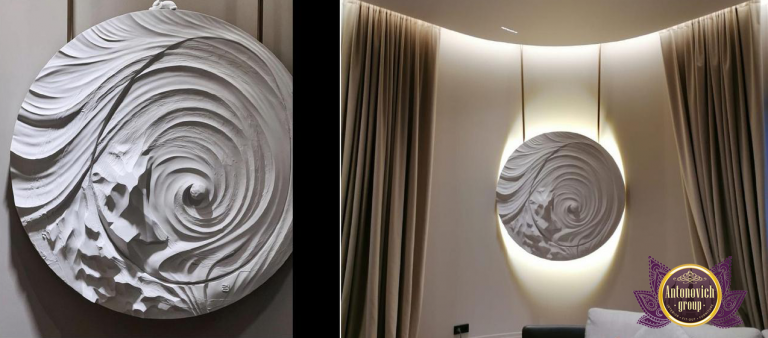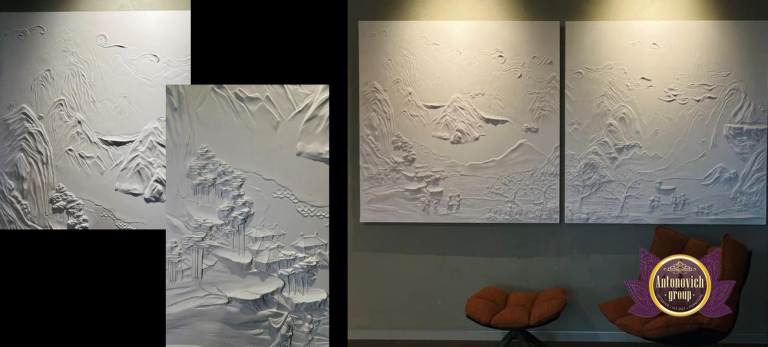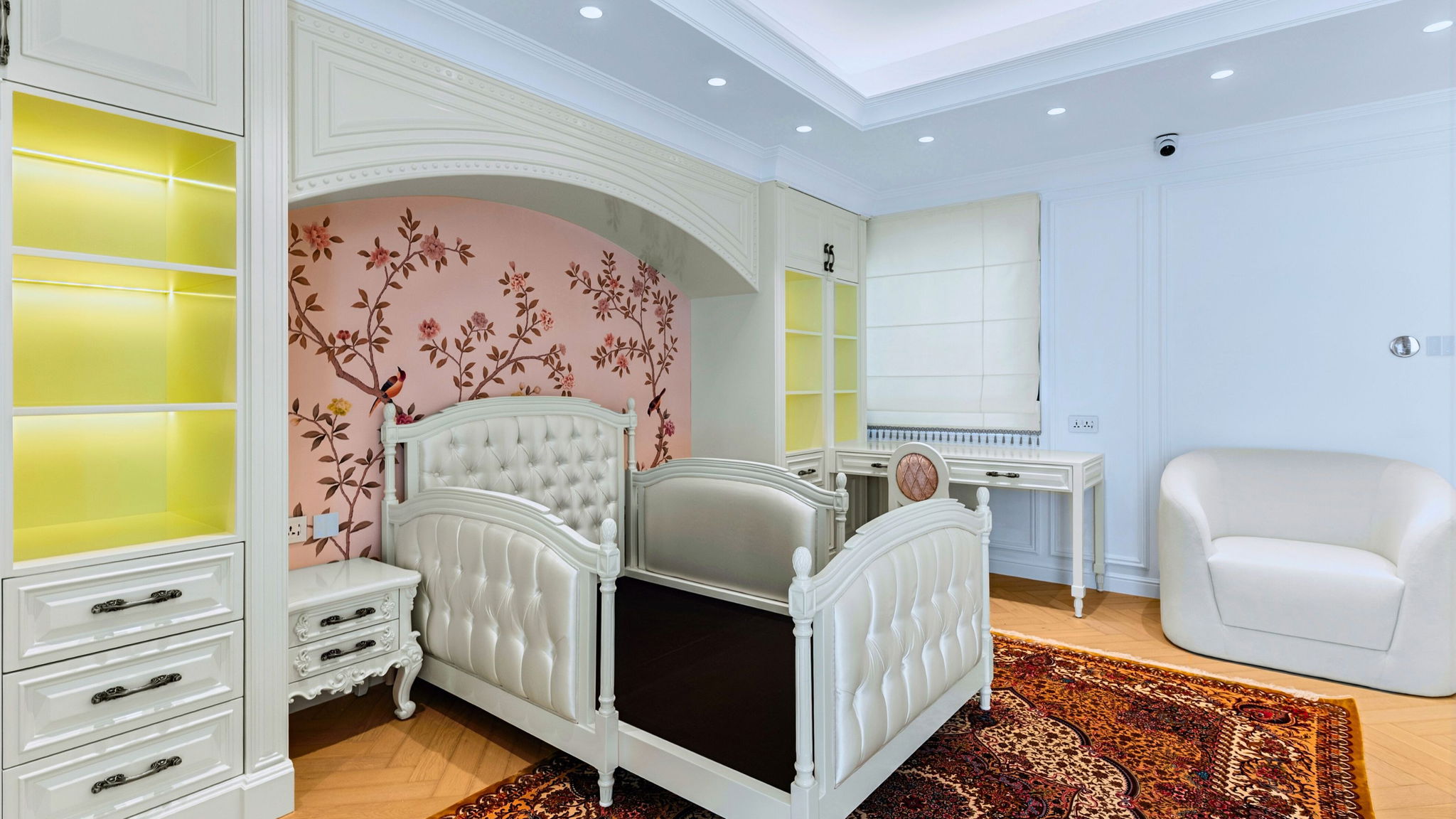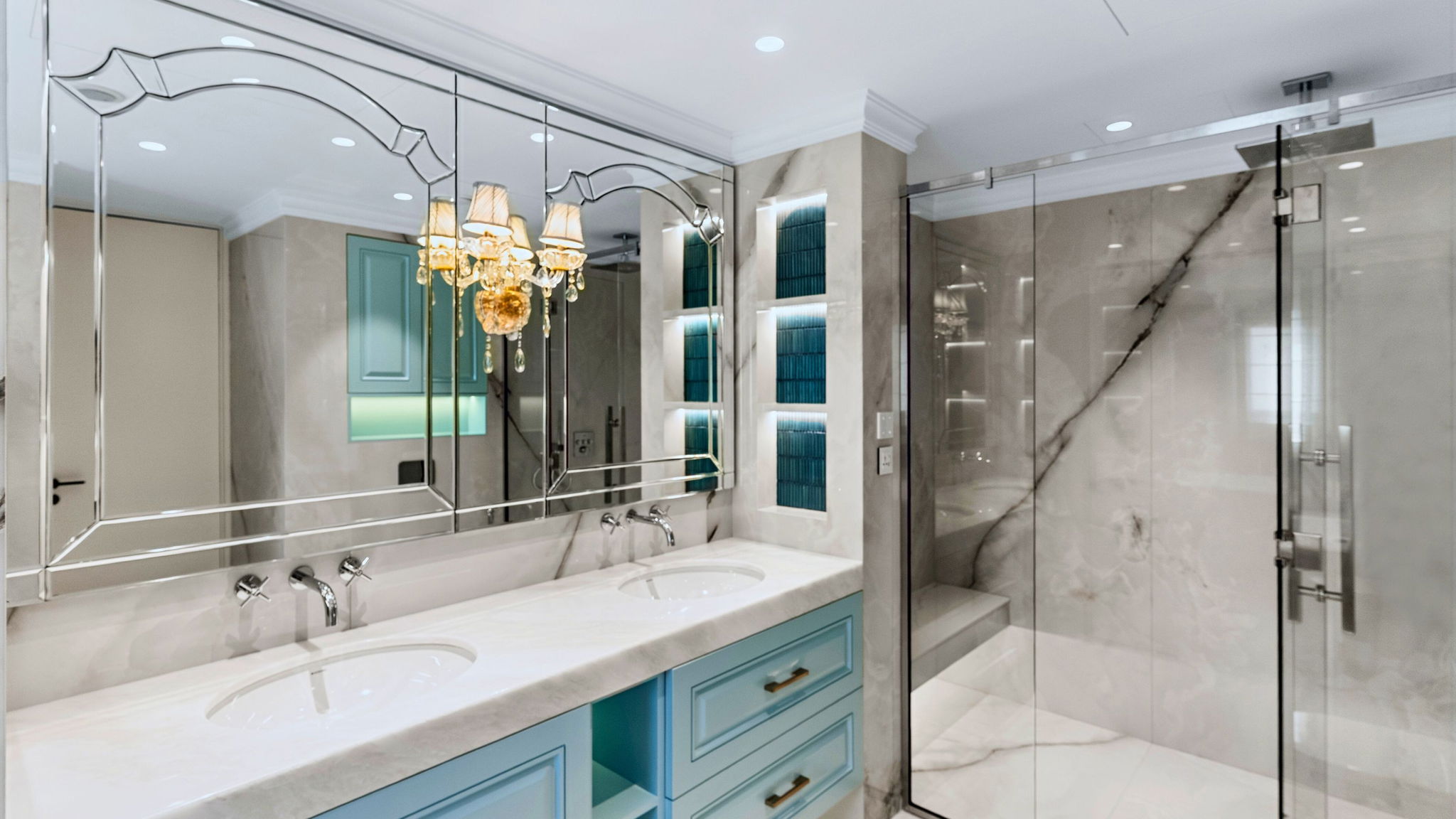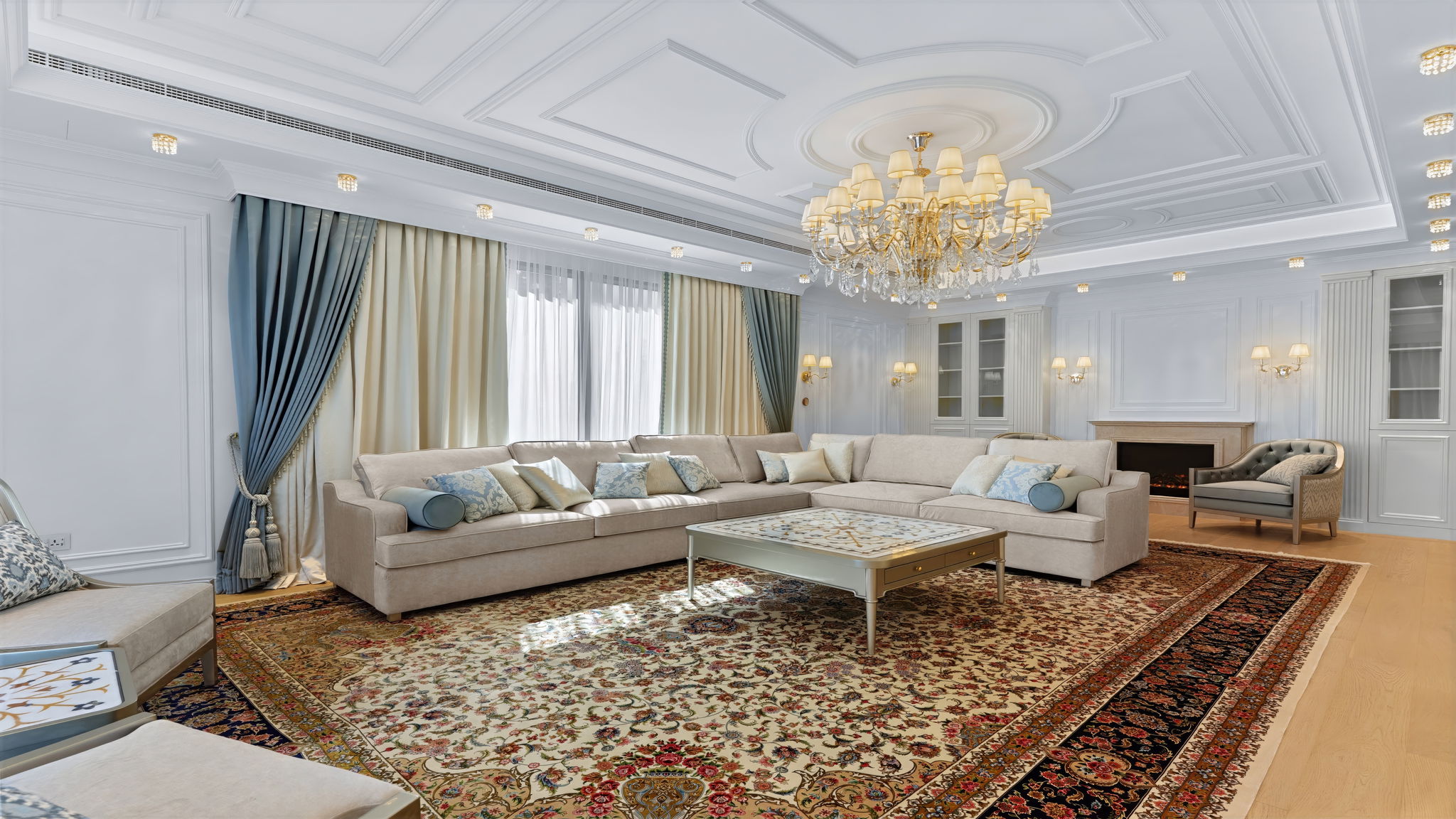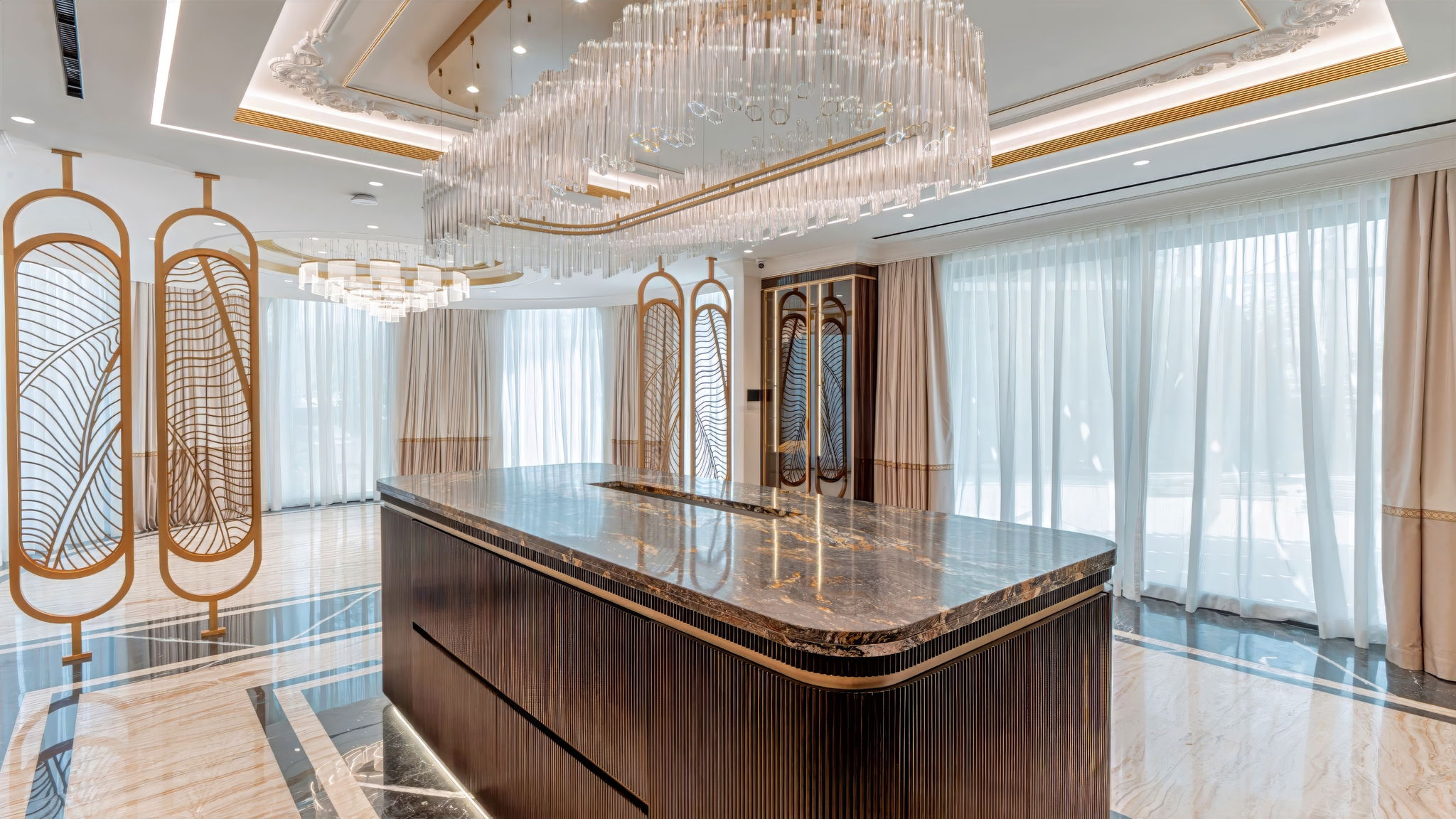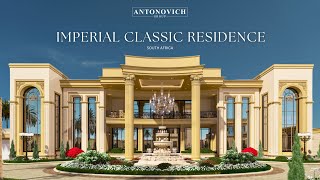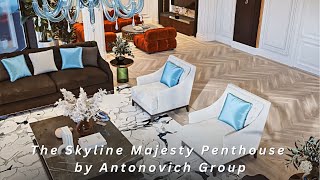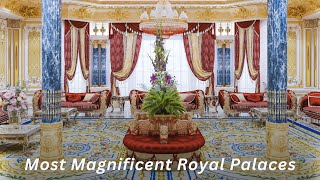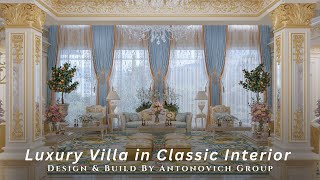WHY USE EMBOSSED ART
Embossed art in Dubai is an innovative technique that has been widely used in interior design for decades. It is a process of creating raised or 3D images on a surface, which gives a unique texture and depth to the artwork. This technique is particularly popular in creating wall art, decorative panels Dubai, ceilings, and other ornamental elements that can enhance the aesthetics of a space. Embossed art has the power to transform a plain and ordinary interior into a stunning and elegant one.
One of the most significant advantages of embossed art in interior design is its ability to add depth and dimension to a flat surface. By creating raised patterns or designs on a surface, the artwork becomes more tactile and visually appealing. Embossed art can be used to create a variety of textures, from intricate and detailed to simple and clean. This technique allows designers to add a unique touch to their luxury Dubai interior designs and make them stand out from the rest, including elegant dining rooms.
Embossed art is also a great way to add a touch of luxury to an interior space. This technique has been used for centuries to create ornate and lavish decorative elements; learn how legendary architect masterpieces incorporated such details. In the past, embossed art was reserved for the wealthy and elite, but today it has become more accessible and affordable. With advancements in technology, embossed art can now be created using a variety of materials, including metals, wood, plastics, and even fabrics. This allows designers to create custom-made pieces that fit any style or budget. These custom pieces can be coordinated with luxury home furnishings to form a cohesive look. One of the most popular applications of embossed art in interior design is creating decorative panels. These panels can be used as focal points in a room, adding a touch of elegance and sophistication. Embossed panels can be made using a variety of materials, including metal, wood, and plaster. These panels can be created in a variety of sizes and shapes, making them versatile enough to fit any space or design style. They can also be integrated into entryways and premium doors in Dubai to elevate the space.
Ceiling art is another popular application of embossed art in interior design. Embossed ceiling tiles can be used to create stunning designs that draw the eye upward, adding height and depth to a room. Ceiling tiles can be made using a variety of materials, including metal, plaster, and wood. They can also be painted or finished in a variety of colors and textures, making them a versatile design element.
Wall art is another area where embossed art is commonly used in interior design. Embossed wall art can be created using a variety of materials, including metal, wood, and plaster. These pieces can be used to create a focal point in a room or as part of a larger wall installation, and they can complement upholstered fabric headboards. Embossed wall art can be painted or finished in a variety of colors and textures, allowing designers to create custom pieces that fit their design style.
In addition to its aesthetic value, embossed art also has functional benefits. Embossed surfaces can be easier to clean and maintain than flat surfaces. The raised patterns and designs can hide scratches and other imperfections, making them ideal for high-traffic areas. Embossed surfaces can also help to absorb sound and reduce noise levels in a room.
In conclusion, embossed art is a versatile and beautiful technique that can add depth, dimension, and luxury to any interior space. It has been used for centuries to create ornate and lavish decorative elements and is now more accessible and affordable than ever before. Embossed art can be used to create decorative panels, ceiling tiles, wall art, and other ornamental elements that can enhance the aesthetics of a space. It can also provide functional benefits, such as easier maintenance and noise reduction. Designers often adapt embossed motifs across scales and settings, including outdoor projects like Saudi Arabia landscape design. With its versatility and beauty, embossed art is a must-have element in any interior designer's toolkit.




